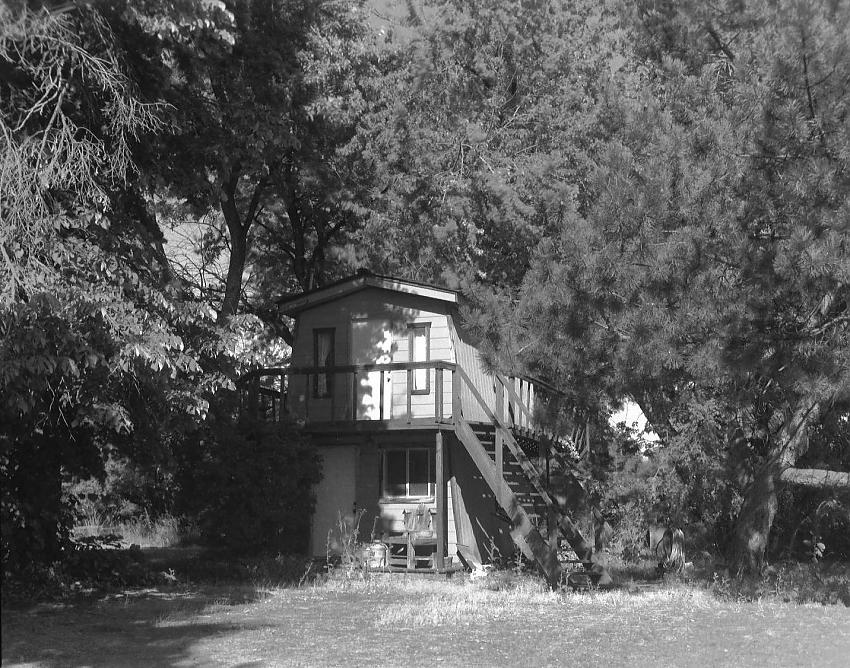View of small workshop on our property. Paper negative contact printed onto paper print. Exposed negative with yellow filter on lens to tame contrast. This got contrast under control really well. Pre-flashed negative before exposure. Printed with same paper using enlarger light source and grade 2 filtration.
The print has a look all its own, different from using ortho-litho negatives, X-ray film negatives, or panchromatic film negatives. I haven't shot pan film for several years, mainly due to cost, plus I like to experiment. The midtones don't have very good separation, so these paper negatives might work better with other subjects. I was surprised at how well the yellow filter tamed the contrast of the negative.
The lens used for this shot is a brass rapid rectilinear, marked '8X10 Rapid Rectilinear Ralph J. Golsen Supply Co., Chicago', mounted in a brass Wollensak pneumatic shutter. Some previous owner had removed the right hand cylinder and the internal linkage to the slow shutter speeds, probably because they had become unreliable. Now it has T, B, and I, where I is the highest marked shutter speed at 1/100 but is probably closer to 1/50. Still very usable as is, and was really cheap at about $26 from the great auction site.
Used some front rise and the lens covered, but the upper corners are very soft even at f64. This lens is probably best used with very little movement, then the corners aren't bad at all at f64 for contact prints.








